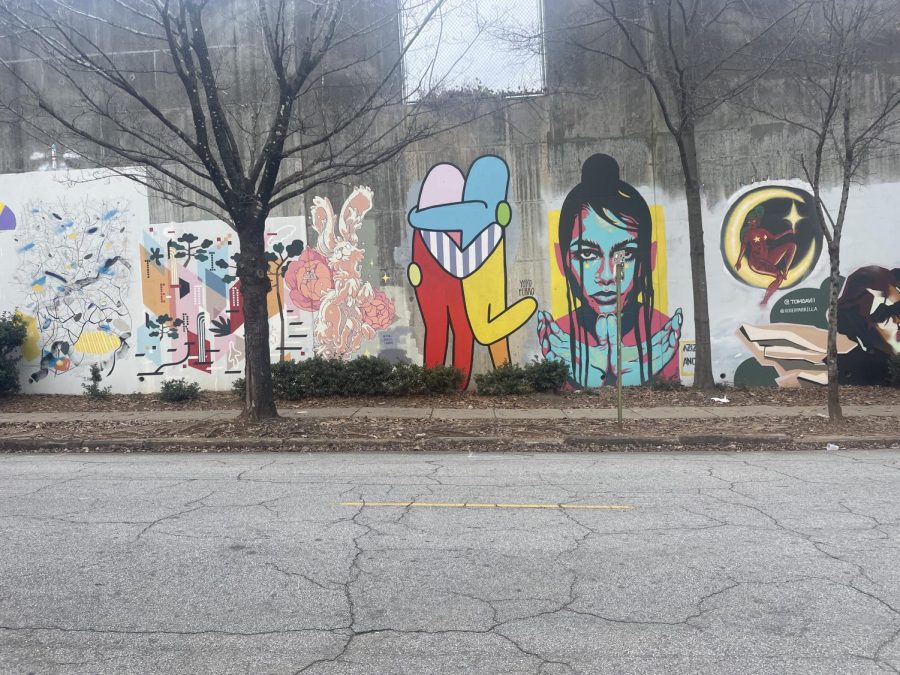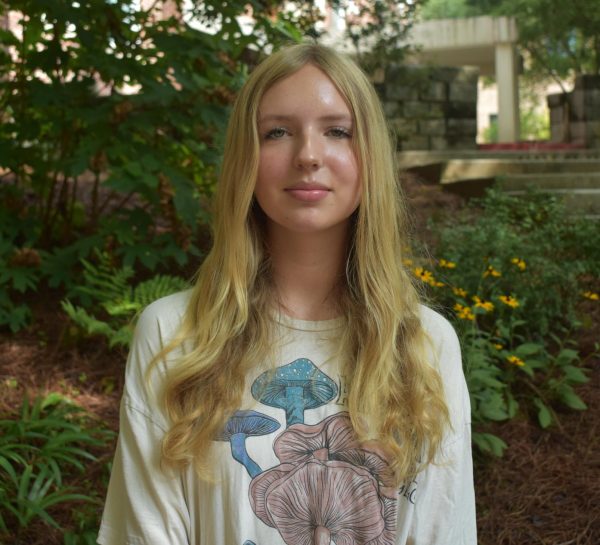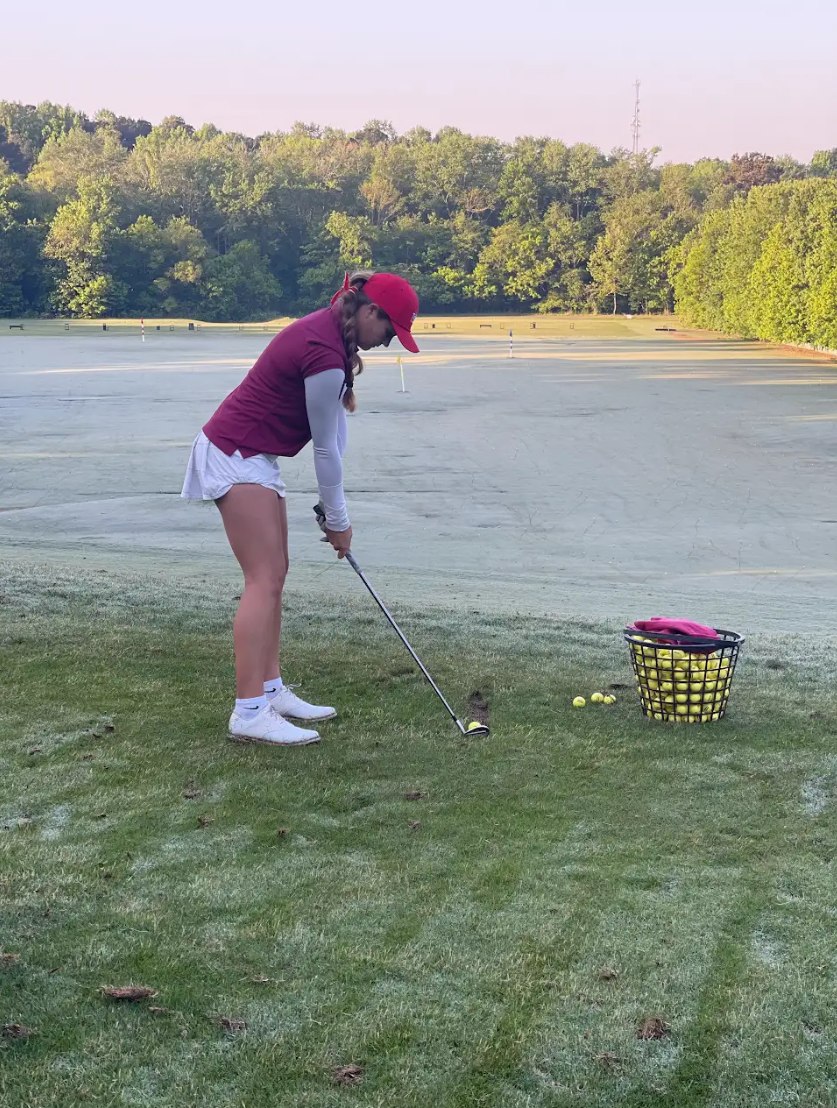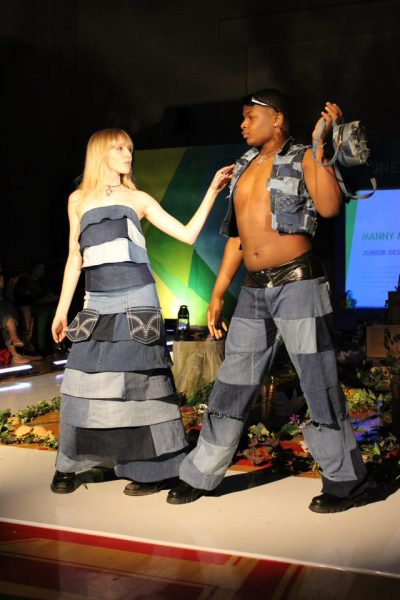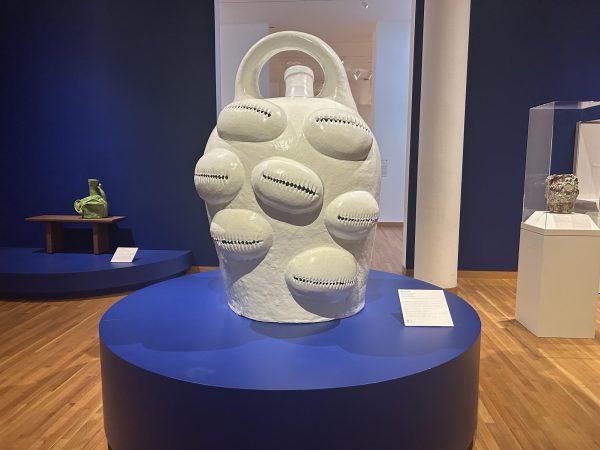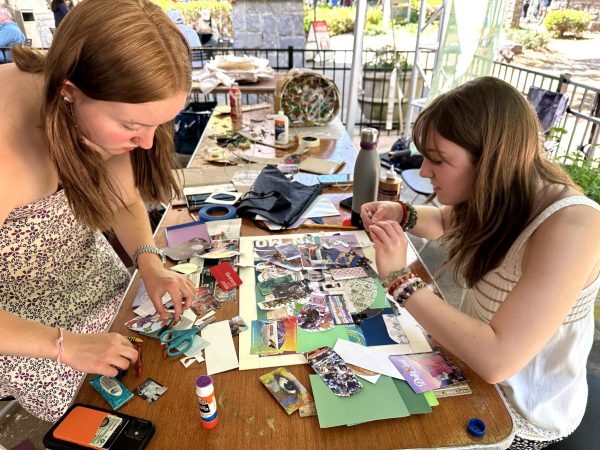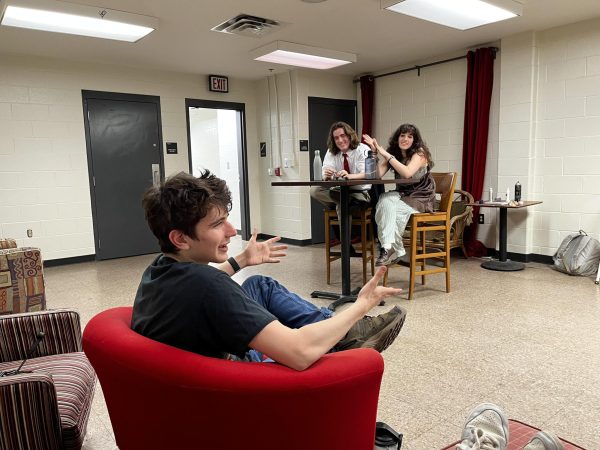Street art takes hold in Atlanta, builds character
February 15, 2023
Street art was once an underground movement in Atlanta, but is now a crucial representation of Atlanta’s art and a focal point for artists from around the world. For many artists who call Atlanta home, street art has been a prominent characteristic of their lives.
Atlanta street art has inspired people to develop their own art careers. For Brazilian muralist Yoyo Ferro, murals around Atlanta helped his love for art resurface.
“I always drew as a kid,” Ferro said. “My parents always wanted me to draw and make art. But in Brazil, having to make a living with art is almost impossible. So, it was never a serious thing that I even considered as a possibility. Atlanta has so much street art, and so many murals around town, and I didn’t grow up with anything like that in Brazil. And that was very inspiring to me. So, I started drawing again, started painting, and I decided that that’s what I was gonna do.”
While Ferro appreciates various different media of art, public murals are uniquely special to him.
“I like all kinds of media,” Ferro said. “But, murals are the one medium that really feels good making. The fact that it is such a big, large scale of artwork. And it’s hard, physically challenging work to do. So, once you’re done, you feel good about it. It’s like you accomplished something great.”
A goal of Ferro’s is to make a positive impact on those who see his art.
“I want to make [art] that makes people surprised, and that puts a smile on their faces,” Ferro said. “There’s a couple that got married that met because they both liked my artwork. In a way, even when it wasn’t my intention, because of the passion for my artwork, I kind of led people to get together.”
Making an impact is a goal for many Atlanta artists. Grady Alum Alex Brewer, also known as HENSE, hopes that his art brings a memorable experience for its viewers.
“I would like to inspire somebody, maybe if they see it on their daily commute, or if they are using public transit, or if they’re using the BeltLine,” Brewer said. “Hopefully, it would make it more of an interesting experience for them.”
Peter Ferrari, an Atlanta muralist, has had a lifelong passion for street art that stemmed from graffiti during his time in high school.
“My friends and I would go and paint the walls, kind of mid-90s graffiti stuff,” Ferrari said. “Well, my mom found out I was doing that and didn’t like it, so she got me a bunch of canvases and paints and stuff for Christmas one year. I was still painting in abandoned buildings, but then I would do some canvas stuff on the side. And eventually, I had a big art show of my paintings on canvas.”
When entering the art community in Atlanta, Ferrari faced multiple challenges.
“I was actually discouraged from doing murals a few times by sort of the gatekeepers of the Atlanta art scene a few times,” Ferrari said. “But, I think that was actually a sign that they were maybe a little worried about me passing them in terms of success.”
Since then, Ferrari has made it a priority to encourage new artists around him.
“Especially in the world of street art and graffiti, there are a lot of haters out there,” Ferrari said. “They want to discourage new people from getting into what they consider their field. But at this point, I’ve been doing it for 12 years, and I really try to do the opposite. So, when I see someone who’s talented and see someone who’s working really hard, I really try to uplift them and give them access to opportunities.”
Ferrari has provided opportunities for artists through art events. He founded Forward Warrior, an annual art event that allows muralists to collaborate and create murals in Atlanta. Over time, the event has flourished.
“The first event we had was held in the back lot of an art gallery,” Ferrari said. “We had a really good time; it was just sort of a live painting party, and then over time, it got noticed for that. I got asked by some folks in the Castleberry Hill neighborhood, and then eventually in the Cabbagetown neighborhood, to do the event on public walls painting live. From there, Forward Warrior bloomed. And it’s become a real fixture in the Atlanta art scene. We’ve made over a half mile of murals now. We’ve filled that wall, so we have to paint over the murals every year.”
Ferrari hopes Forward Warrior has played a role in making Atlanta street art more accessible to the public.
“I hope that it’s provided really just a place to go see that kind of art,” Ferrari said. “When I was growing up, if you wanted to see that kind of art, you had to go under a bridge, or you had to go in an old, abandoned warehouse or something like that. Not everybody wants to go to those kinds of places. So this made it much more accessible. And, I have definitely seen more public art and more street artists, and more people painting murals over the last decade.”
Some Atlanta street artists have faced difficulties in the past. In 2017, Ferro and Ferrari, along with several other artists, filed and won a lawsuit against the city of Atlanta regarding an ordinance that would limit the number of public murals.
“A bunch of public artists got emails and messages on Facebook, basically saying that they were going to start enforcing this ordinance that had been out of commission for 30 years or so, and that if we wanted to keep our murals up, we would need to go back in and retroactively get them approved through the city council,” Ferrari said. “We viewed it as a violation of our First Amendment rights. And so obviously, we were all like, ‘screw this, this is not fair, this is denying us free speech.’ And there were business owners who had art on their property, and they felt like their free speech was being denied.”
Ferro says the lawsuit has had a notable impact on the creation of public art in Atlanta.
“I feel like this totally opened doors to so much more art around town,” Ferro said. “People might not even know about this today because they assume everything has always been this way. But, it was slightly harder before. What if you painted something without approval? You would have basically done something illegal.”
Ferrari says the amount of public art, since the lawsuit, has increased.
“At this point, there’s no active public art ordinance on the books in Atlanta, which just really makes it very easy for us to put up a lot of art,” Ferrari said. “It really just encourages more innovation and more art when you have fewer restrictions and regulations.”
Encouraging more public art has played a pivotal role in transforming parts of the city.
“A lot of areas where infrastructure was neglected in some parts of town have been revitalized by having murals painted,” Brewer said. “It’s given a little bit of new life to some of the infrastructure that was maybe not taken care of fully.”
This increased vibrancy, which has brought much of the city back to life, has created an energy that some students, including senior Aisling Mahoney, admire.
“It just makes me so happy to see people expressing themselves,” Mahoney said. “And I think one of the most magical things is when you start to recognize an artist from one mural to the next, when you can see a mural and say, ‘oh, my God, I know when that looks so much like that,’ because you can tell the same ideas, and the same kind of vibe, the same style across town. It’s just so bizarre to be like, ‘oh, my gosh, there’s another one.’ It’s such an interesting connection.”
As street art gains more popularity, its importance to Atlanta grows as well.
“I feel like there’s a lot of people out there that know Atlanta in a deep way, because of street art,” Ferro said. “People go out of their way to basically seek street art and learn about the neighborhoods. So there’s that portion of it that makes you go out and explore. But also, street art makes your community a little more creative. It’s like a little gift that’s given to the community.”

